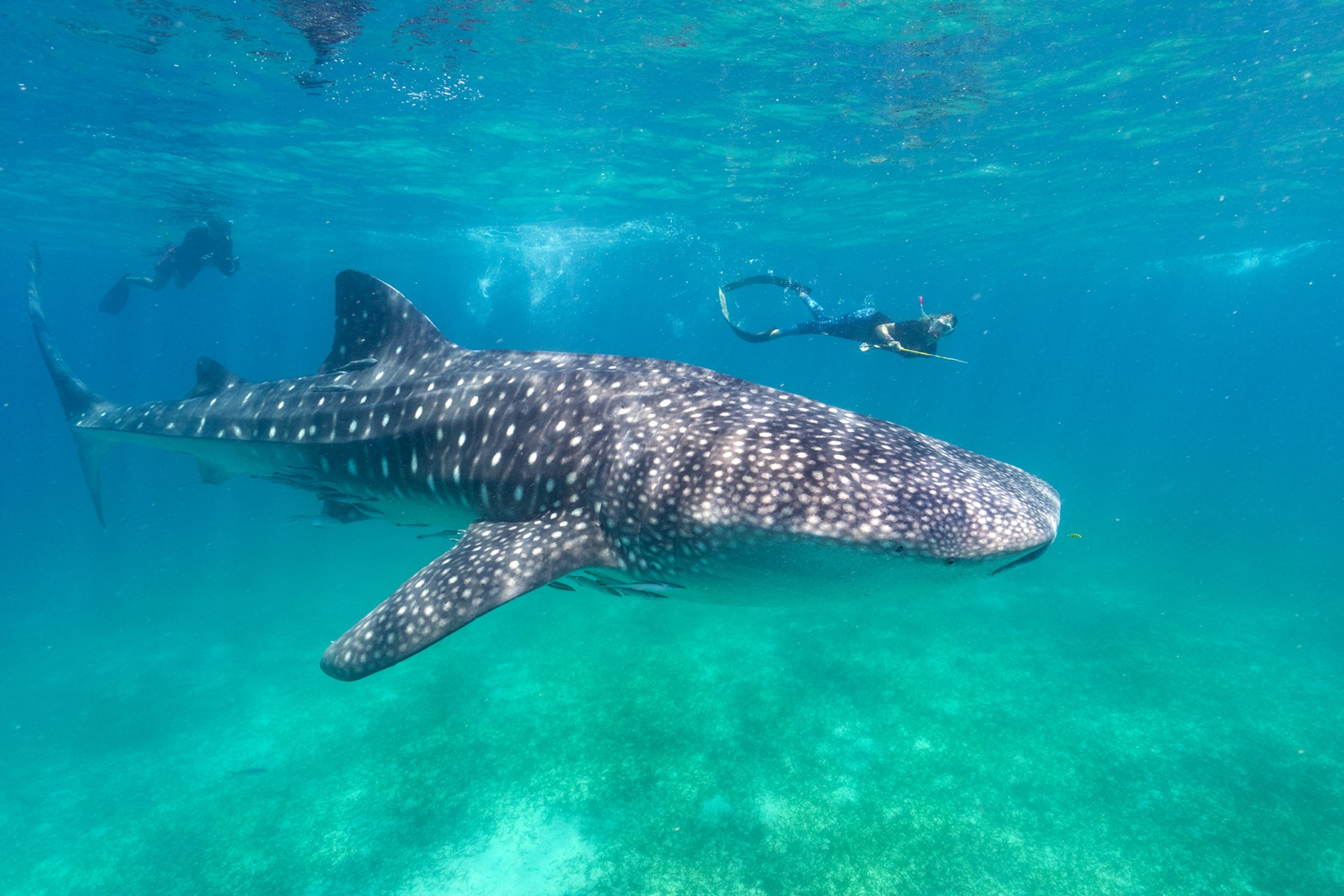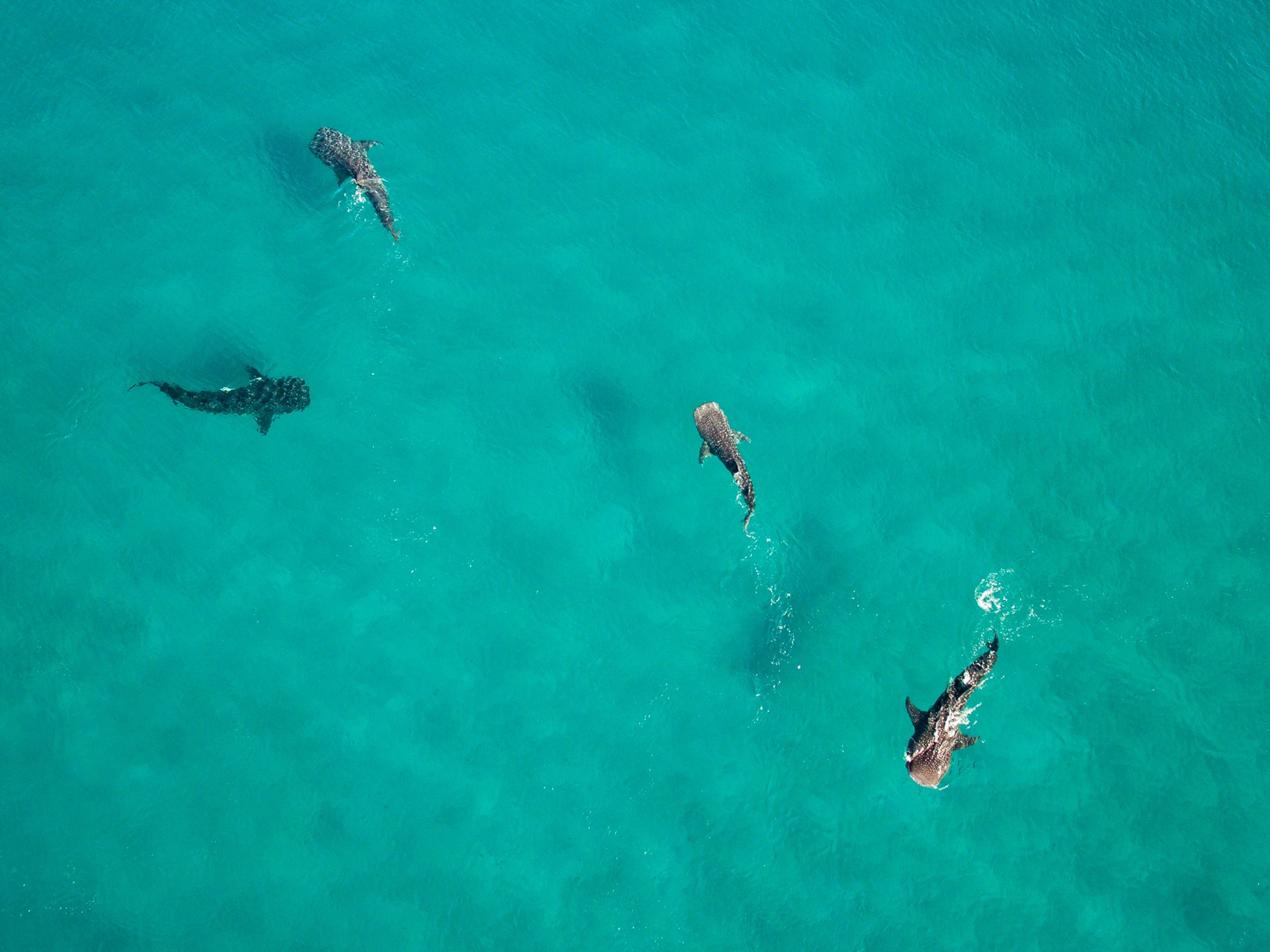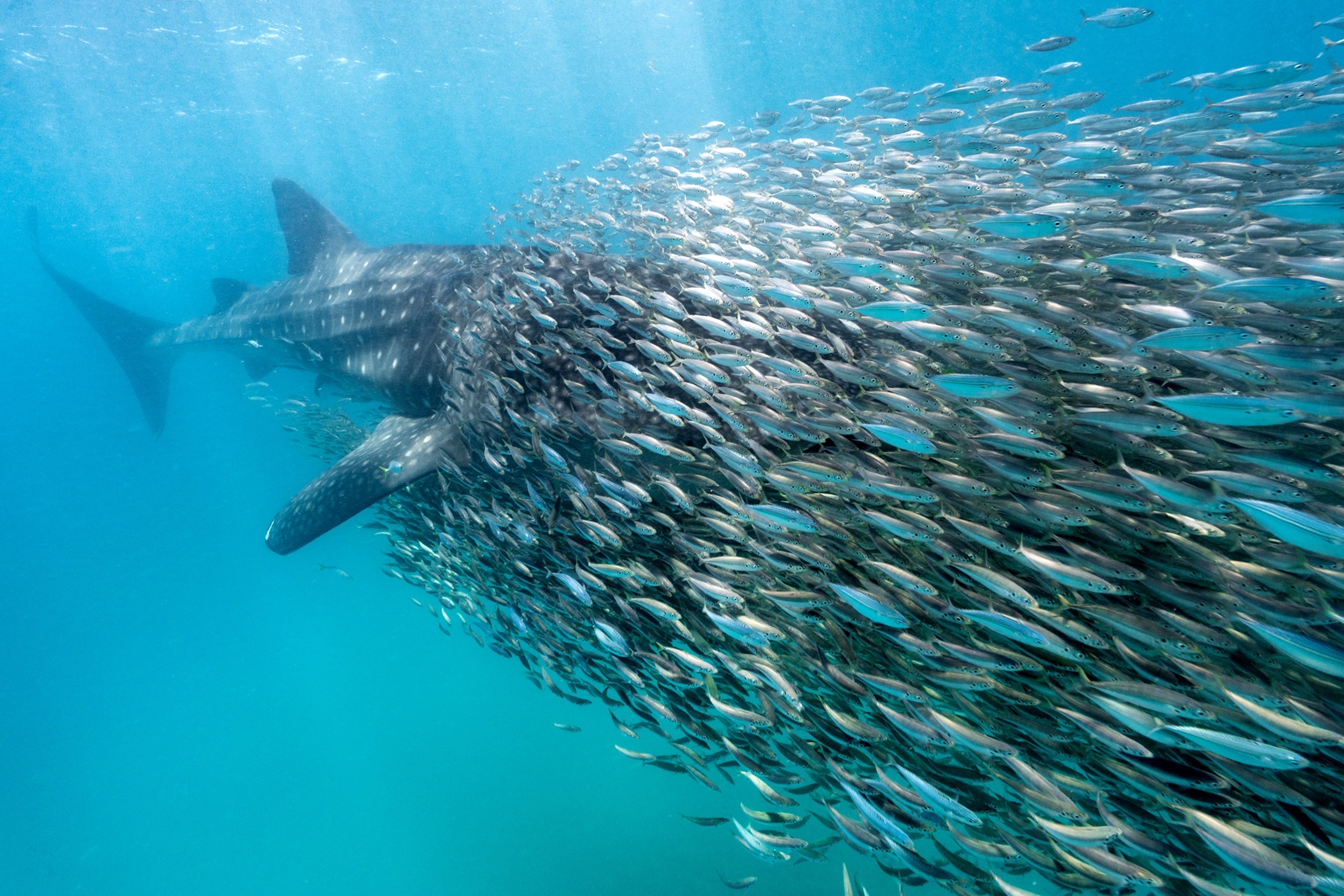Why the World's Biggest Sharks Love Mafia Island
Scientists hope the whale sharks that live around the East African island will help them better understand how to preserve the species.
In some places, whale sharks routinely swim between countries, even on a daily basis. But at Mafia Island—a New York City-sized atoll just off the coast of Tanzania—the world’s largest fish are such regulars that scientists started to name them.
“There aren't too many places where you repeatedly see the same whale sharks,” says Simon Pierce, principal scientist and researcher for the Marine Megafauna Foundation. “These days, it's almost like visiting old friends.”
Yet his old friends are dangerously close to extinction.
In July 2016, Pierce advised the International Union for the Conservation of Nature (IUCN) to reclassify these gentle giants as an endangered species on the group’s Red List. There is no good estimation of the number of whale sharks internationally, but according to the global online photo-identification database of sightings, there are at least 8,000 identified whale sharks roaming waters worldwide.
But because whale sharks can be found year-round off Mafia, the island offers a rare opportunity for scientists to study them. Scientists can analyze their diet, movements, and growth, with one goal being to better develop strategies to protect the giant fish.
“The fact that Mafia whale sharks are so resident shows that both international and local legislation are needed to effectively protect whale sharks,” Pierce says.
Counting Whale Sharks
In the same way people have fingerprints, whale sharks have distinctive patterns and scarring. Researchers use these markings—located on the left side between the pectoral fin and the gills—to identify each individual fish. In 2007, marine biologist Matthew Potenski from the Shark Research Institute began photo-identifying whale sharks off Mafia Island.
Pierce and his colleagues were amazed that the same fish documented years earlier were still swimming around the island.

“Once we established that these sharks were living here, not just visiting, it became clear that Mafia is an amazing site to learn more about whale shark ecology,” he says.
The team conducts its research in November and December, which falls during the five-month stretch from October to February when it is easiest to see the sharks. Thanks to their eating behaviors, the sharks move inland to forage on shrimp at the surface. Come February when the sharks begin to retreat, electronic tagging shows they remain close by and swim deeper in the water.
“Presumably they're switching to another source of prey, but we haven't got that figured out yet,” Pierce says.
There are quite a few things scientists are still trying to figure out about this species, like how they reproduce, where and how they give birth, and where they spend the first years of their lives.
Photographer and video journalist Steve De Neef says he finds it fascinating how little we know about the world’s biggest fish. De Neef spent time with Pierce and his colleagues at Mafia Island photographing the sharks over a two-week period this past December.
“I would like to believe their future looks good but realize that their numbers are declining due to human threats,” De Neef says. “Boat strikes, getting entangled in fishing gear, and being targeted directly by fisheries are still very real threats.”
That realization highlights a bigger question scientists are racing to answer: What can we do to protect the world’s remaining whale sharks?

Conservation Efforts
The biggest threat to whale sharks comes from a fishery in southern Chinese waters, Pierce says, where several hundred sharks may be caught each year. And though it is technically illegal, enforcement is lacking, says Pierce.
“Whale sharks can't handle that level of exploitation, as they are slow growing and probably don't even become adults until they are 20 to 30 years old,” Pierce says. “If that fishery continues there is a real chance of regional extinction.”
The recent listing of whale sharks as endangered on the IUCN Red List indicates that more countries are championing conservation, Pierce says. Countries that have taken steps to protect the fish include the Galápagos, Mozambique, Mexico, Qatar, and the Philippines.
Several countries have expressed support in promoting the species to Appendix I on the Convention on Migratory Species, which would translate to even stricter international and national protection.

At the local level, Pierce’s team is working with the Tanzanian Fisheries Research Institute on researching ways to avoid conflict between sharks and local fishermen.
“[The sharks] sometimes get tangled in nets,” Pierce says. “The fishers aren't trying to catch them, but it can create a situation where both the sharks and people could be injured.”
One solution is mapping out where fishers fish and where the sharks hang out at the surface. Because the sharks are only seasonally at the surface and generally in a predictable area, it’s possible to set aside certain protected areas.
“There are a lot of answers to come from Mafia,” Pierce says. “It's a fantastic opportunity to learn more about what is still a remarkably enigmatic fish.”





